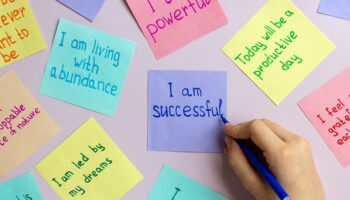By James W. Nicholson, M.Ed.
There is a myriad of issues that we all have to deal with on a daily basis. Many of us are parents. We are stressed with financial obligations. Perhaps, you have finally gone back to school, and now you are utterly apprehensive about passing your classes. Maybe you’re just upset because, on your way to work, someone cut you off in traffic. With all of these issues, and many other concerns occupying our thoughts, it becomes increasingly more challenging to be present in the moment. How can we be “mindful” at all times?
Mindfulness is defined as “moment-by-moment awareness” (Germer et al., 2005, p. 6). When we are mindful, we are always conscious of our thoughts and feelings. The aware individual will practice the ability to be in control of their consciousness, rather than their consciousness being in control of them. The opposite of mindfulness is mindlessness. The mindless individual merely meanders through life; reacting to situations as they occur. There are many benefits to practicing mindfulness. Some of these benefits include stress reduction, improved memory, focus, less emotional reactivity, and relationship satisfaction (Davis & Hays, 2011). To reach our full potential, we must learn how to reduce and control those things that are barriers to practicing mindfulness.
The obstacles that prevent us from reaching a state of mindfulness may be collectively defined as static. The problem is that we have become so accustomed to operating with high levels of static in our lives, that many of us have become conditioned to believe that this normative. Imagine this scenario: You are in a room without any electronic media (tv, cell, computer, etc.). Does the thought of being in a place, alone with nothing but your thoughts, frighten you? I must admit that it does make me feel uncomfortable. I am so used to distractions that I have had to learn how to be alone with my thoughts, even for a few moments. Learning how to quiet your mind will help you to practice mindfulness techniques. Elisha Goldstein, the author of The Now Effect, gives us seven things that mindful people do. They are:
- Approach everyday things with curiosity and savor them
- Forgive their mistakes, big and small
- Show gratitude for good moments and grace for bad ones
- Practice compassion and nurture connections
- Make peace with imperfection – inside and out
- Embrace vulnerability by trusting others – and themselves
- Accept and appreciate that things come and go (Goldstein, 2015).
Mindfulness has gained renewed popularity in recent years. The reason for this may be due to the increased level of stress our daily lives. There have even been promising studies that have shown that mindfulness may help children with ADHD. Additionally, this research has shown that these techniques will work on parents who suffer from the disorder as well (Oord, Bogels, & Peijnenburg, 2012). With these encouraging findings, we can not only positively affect our practice as providers, but also help the families that we serve.
References:
K.Germer, R. D. Siegel, & P. R. Fulton (Eds.), Mindfulness and psychotherapy (pp.3–27). New York: Guilford Press
Davis, D., Hayes, J., (2011). What are the benefits of mindfulness: A practice review of Retrieved from psychotherapy-related research. Psychotherapy, 48(2), 198-208. http://www.apa.org/pubs/journals/features/pst-48-2-198.pdf
Goldstein, E. (2015). Seven things mindful people do differently and how to get started. Retrieved from https://www.mindful.org/7-things-mindful-people-do-differently-and-how-to-get-started/
Oord, S.,Bogels, S., & Peijnenburg, D. (2012). The effectiveness of mindfulness training for children with ADHD and mindful parenting for their parents. Journal of Child & Family Studies, 21(1), 139-147. doi:10.1007/s10826-011-9457-0




